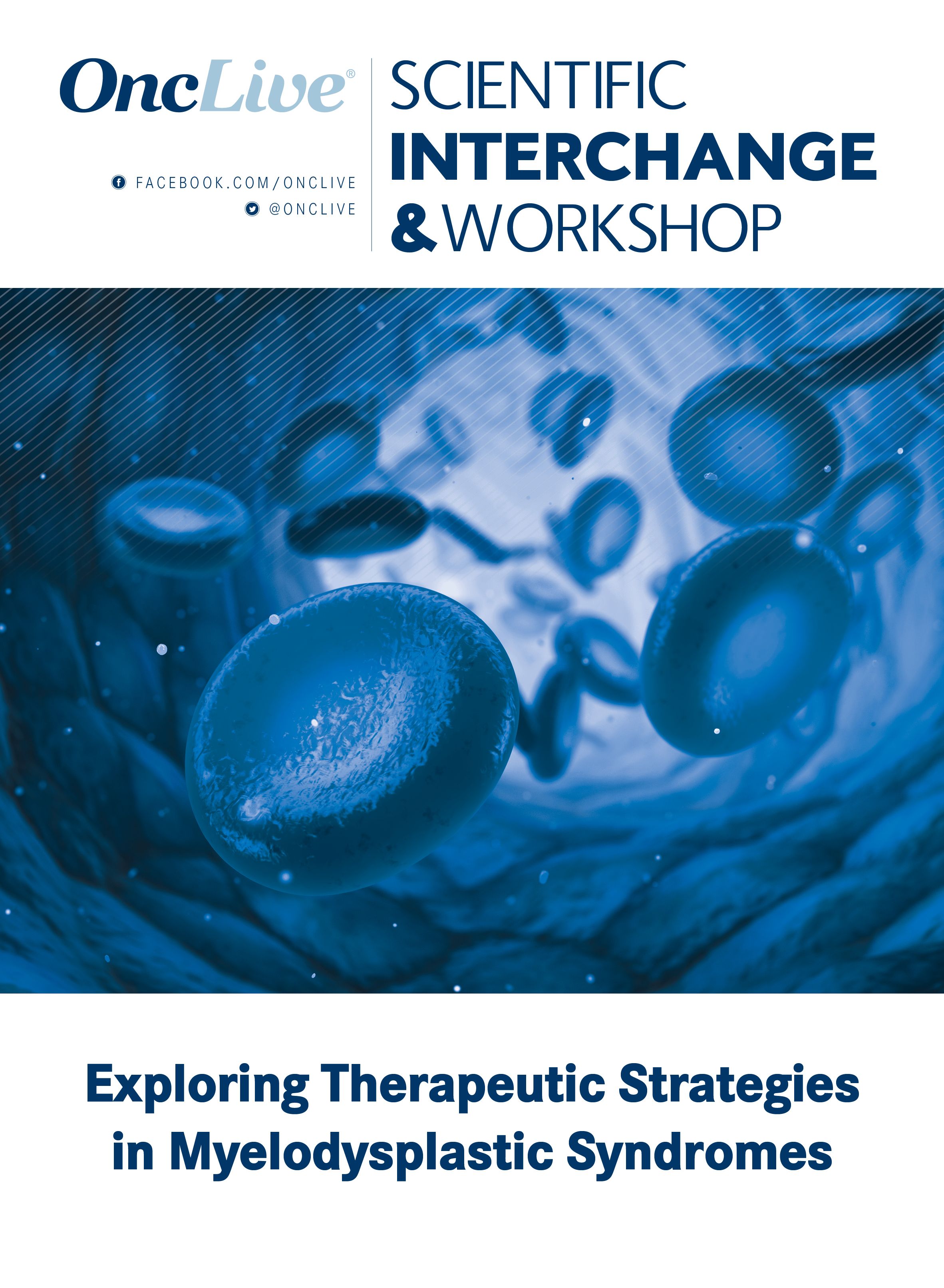Shammo Previews the Potential of Pevonedistat Combo in High-Risk MDS
Jamile M. Shammo, MD, discusses the current treatment landscape of high-risk MDS recent data with the investigational small molecule inhibitor of the NEDD8-activating enzyme pevonedistat, and ongoing research efforts in the space.
Jamile M. Shammo, MD

The combination of pevonedistat and azacitidine has shown encouraging clinical activity in patients with myelodysplastic syndromes (MDS) and low-blast acute myeloid leukemia (AML), according to Jamile M. Shammo, MD, who added that if the benefit is upheld in longer-term follow-up, the regimen could potentially alter the up-front management of this patient population.
Results from a phase 2 study (NCT02610777) presented during the 2020 ASCO Virtual Scientific Program showed that the combination led to a trend toward improved event-free survival (EFS) and a numerical improvement in overall survival compared with azacitidine alone in patients with high-risk MDS, chronic myelomonocytic leukemia (CMML), and low-blast AML.
Specifically, the median EFS was 21.0 months with the pevonedistat combination versus 16.6 months with azacitidine alone in the intent-to-treat population; this translated to a 34% reduction in the risk of death or transformation to AML. Moreover, the median OS was 21.8 months with the combination versus 19.0 months with azacitidine alone.
In an interview with OncLive, Shammo, a professor of medicine and pathology in the Department of Internal Medicine at Rush University Medical Center, discussed the current treatment landscape of high-risk MDS recent data with the investigational small molecule inhibitor of the NEDD8-activating enzyme pevonedistat, and ongoing research efforts in the space.
OncLive: How do you currently approach the treatment of your patients with high-risk MDS?
Shammo: For patients with high-risk MDS, the main question is not when to treat; for the most part, most patients require immediate treatment with a hypomethylating agent, or, if they are eligible for a clinical trial, then that would be ideal. There are very few patients who have high-risk MDS who do not require immediate treatment; however, I have had some of those patients. I don’t think that there’s any problem with monitoring those patients, as long as you are careful.
When you have to start treatment, usually with either azacitidine or decitabine, you should try to assess response rates at certain points in time; the literature is clear on that. You should also be cognizant on when a patient has progressed [on treatment]. There's some lack of familiarity in terms of criteria for disease progression, but once they do progress, we know there is no second-line treatment [option available].
Oftentimes, MDS may turn into leukemia, but not always. If [disease] progresses to leukemia but [the patient is] not [eligible for] transplant, then perhaps they could receive a combination of venetoclax (Venclexta) with another hypomethylating agent that was not already used up front or they can be considered for a clinical trial.
A subset of patients is simply too sick to receive anything chemotherapy-related and so they may end up with [no options other than] simple transfusions or hospice. In a nutshell, that is how we approach the treatment of these patients every day in practice.
Could you expand on the unmet needs in this space?
We don't know which of the 2 hypomethylating agents [to start with]; we have little guidance on them. Additionally, we don't know what the second-line treatment [should be] or whether [up-front] combination therapies are better. We also don’t know how molecular analyses fit into the formula of treating these patients.
Pevonedistat plus azacitidine is a combination that has recently emerged in the space. Could you speak to the data from the phase 2 study presented during the 2020 ASCO Virtual Scientific Program?
Results showed an improvement in EFS in patients with high-risk MDS who received the combination therapy compared with azacitidine alone. If you look at the low-blast AML population, [the median OS was 23.6 months]; this wasn't nearly as impressive as what was seen in the MDS population. Interestingly, the [EFS in the] CMML population was actually a bit worse with the combination [compared with azacitidine alone].
The numbers are really small and it's hard to think about the statistical power for each of those groups. To me, it's a positive signal for the combination, particularly in the [patients with] intermediate- and high-risk MDS. That's why we need to get more data and longer follow-up to see whether this actually duplicates the data that we saw in the phase 2 study. If that's the case, we should see a huge difference or change in the up-front management of patients with MDS [in the future].
How do you eventually see pevonedistat fitting into the treatment landscape of high-risk MDS?
We must first wait for phase 3 study data. The agent is not yet available. However, if the phase 3 data pan out, and prove to be similar to the phase 2 data, [pevonedistat/azacitidine] may be a promising combination for patients with MDS in the frontline.
It would be helpful if we could identify a particular subset of patients who may benefit from this combination because many other combinations are being studied right now, including those with venetoclax in the frontline setting. For all those trials, it would be helpful to determine which patients may benefit from this the most. We're conducting next-generation sequencing so we can identify the best responders [for these combinations].
Beyond pevonedistat, what are some of the other exciting research efforts that are being made in this space?
Exciting data came from APR246 and the TP53 mutation–directed agents that seem to have an impressive up-front response rate with the combination. However, again, we need more comparisons, larger trials, longer follow-ups, comparing the combination with azacitidine alone to see what would happen. Some data with magrolimab in combination with azacitidine were also reported, which looks to be very interesting.
My excitement is tempered by the lack of positivity when you assess those agents side-by-side with standard of care. We have to tame our excitement a bit, but many interesting combinations are out there for frontline treatment. It’s also important to not forget about rigosertib, which is an agent that has been studied in the frontline management of immediate- and high-risk MDS that showed a significant overall response rate.
The complete and partial responses with rigosertib were similar to those seen with azacitidine, but it’s an oral agent. Again, if we’re able to improve response rates and extend the duration, that would be ideal. A trial with rigosertib has recently completed accrual. We still have to wait and see what they find in the relapsed setting.
Reference:
- Ades L, Watts JM, Radinoff A, et al. Phase II study of pevonedistat (P) + azacitidine (A) versus A in patients (pts) with higher-risk myelodysplastic syndromes (MDS)/chronic myelomonocytic leukemia (CMML), or low-blast acute myelogenous leukemia (LB AML) (NCT02610777). J Clin Oncol. 2020;38(suppl 15; abstr 7506). doi:10.1200/JCO/2020.38.15_suppl.7506




